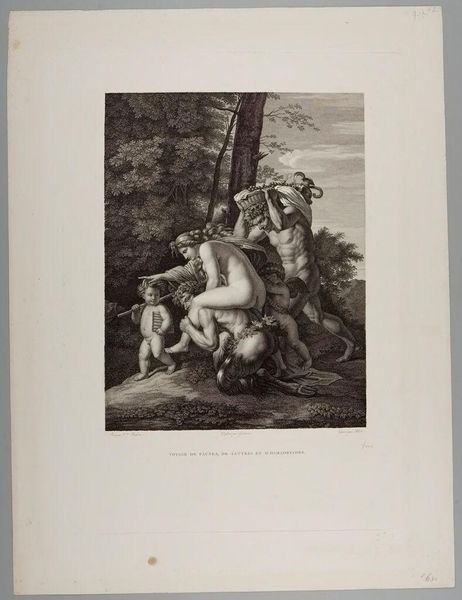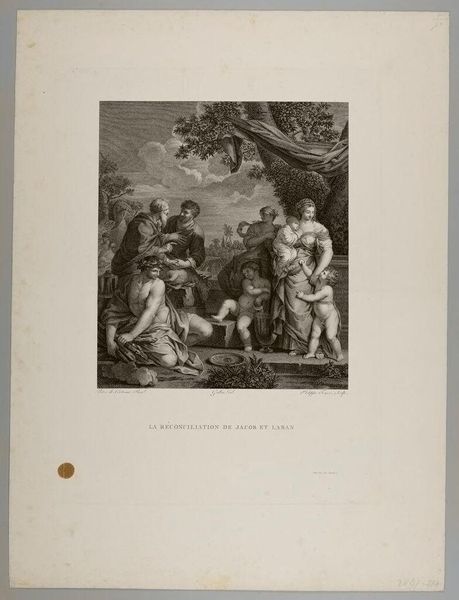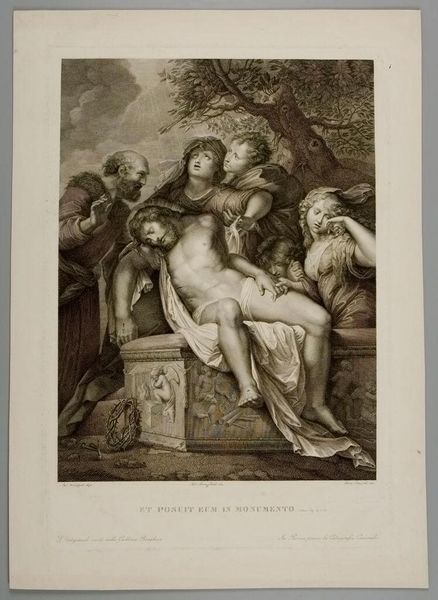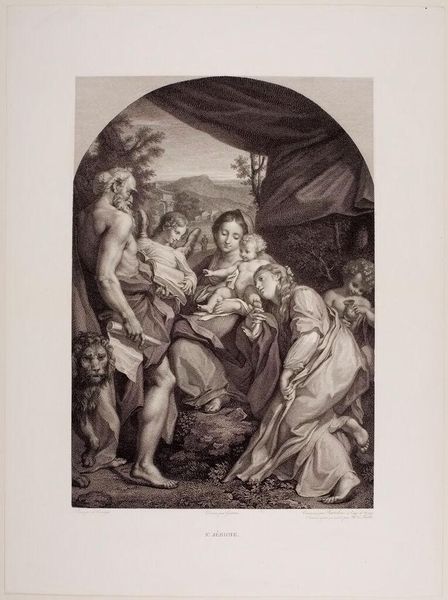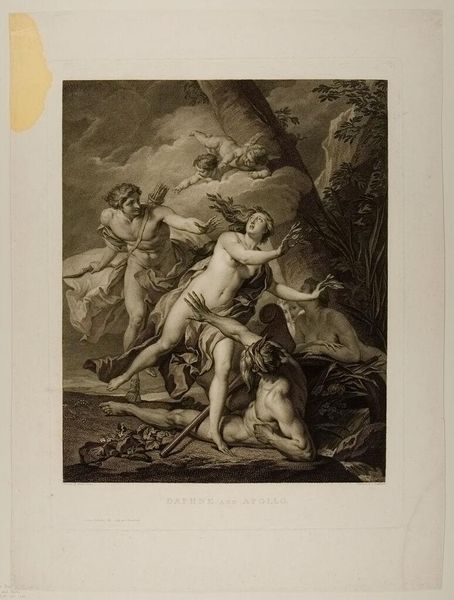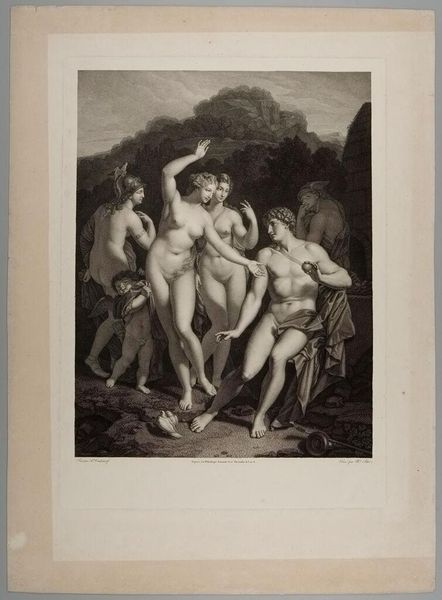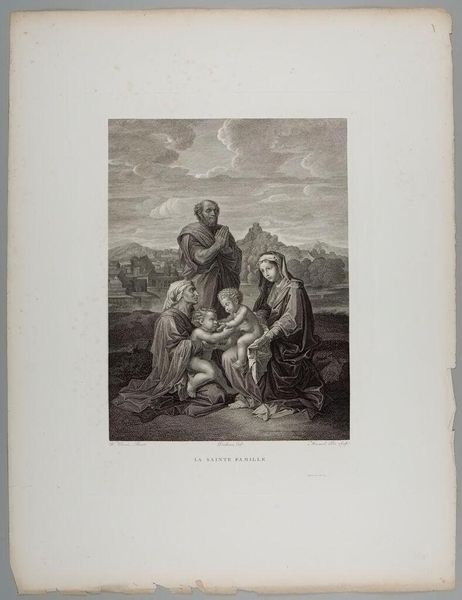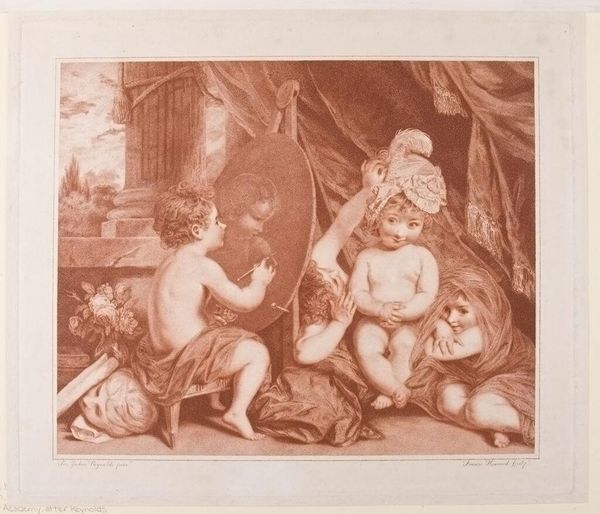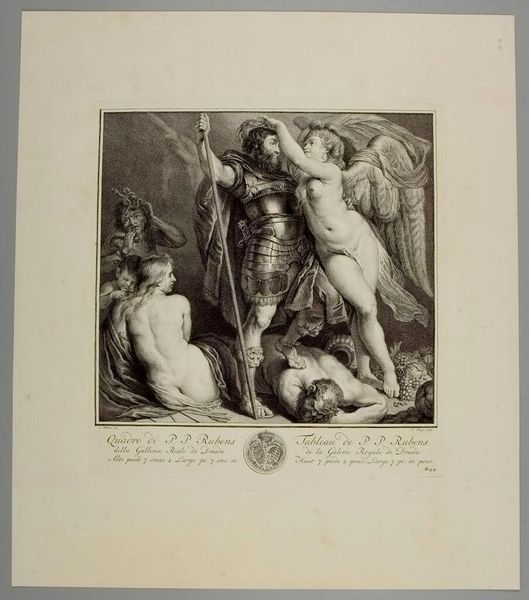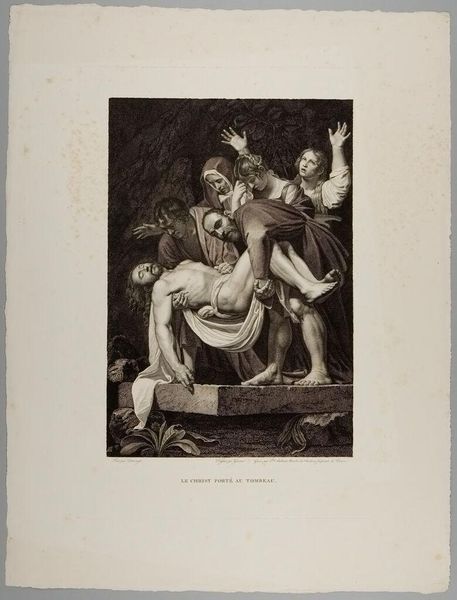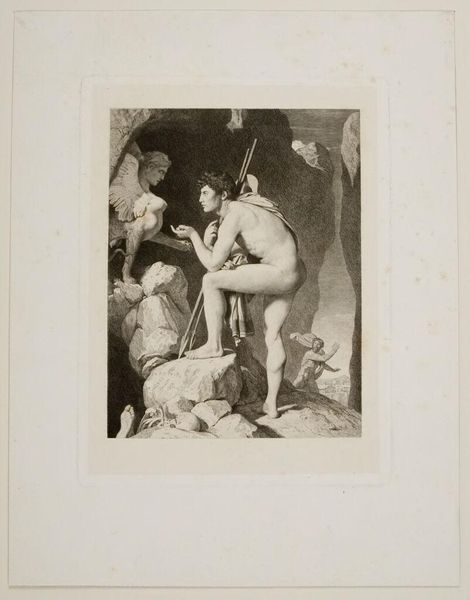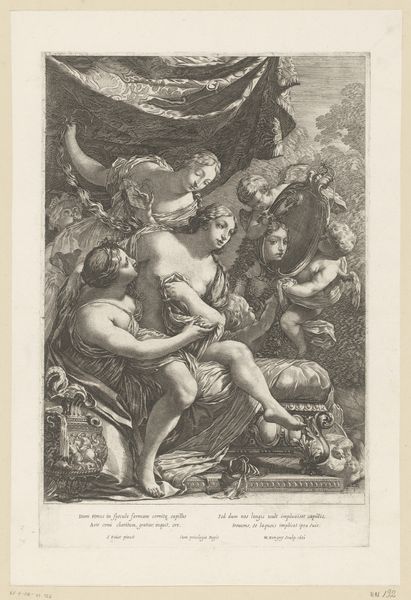
Copyright: CC0 1.0
Curator: Let’s turn our attention to Ernst Morace's "Venus and Vulcan," residing here at the Harvard Art Museums. Editor: My first impression is, well, it’s a bit crowded, isn't it? All those cherubs make it feel… busy. Curator: Indeed. The cluster of cupids acts as both an allegorical representation of love's various facets, and a visual link to classical depictions of fertility and abundance. Notice how Vulcan, the blacksmith god, seems almost overshadowed. Editor: He does look rather grim, doesn't he? Like he’s been caught in the middle of a toddler stampede. Perhaps it's a commentary on the strain of marriage, even for gods? Curator: Or a visualization of the tensions inherent in their arranged marriage – beauty bound to craftsmanship, desire to duty. Morace is exploring the myth's psychological dimensions. Editor: It's interesting to consider how the symbolic language of classical mythology can be reinterpreted across centuries, still echoing in our modern sensibilities. Curator: Absolutely. Morace offers a lens through which we can re-examine these archetypes. Editor: I’ll leave with a renewed appreciation of my own chaotic family gatherings!
Comments
No comments
Be the first to comment and join the conversation on the ultimate creative platform.
